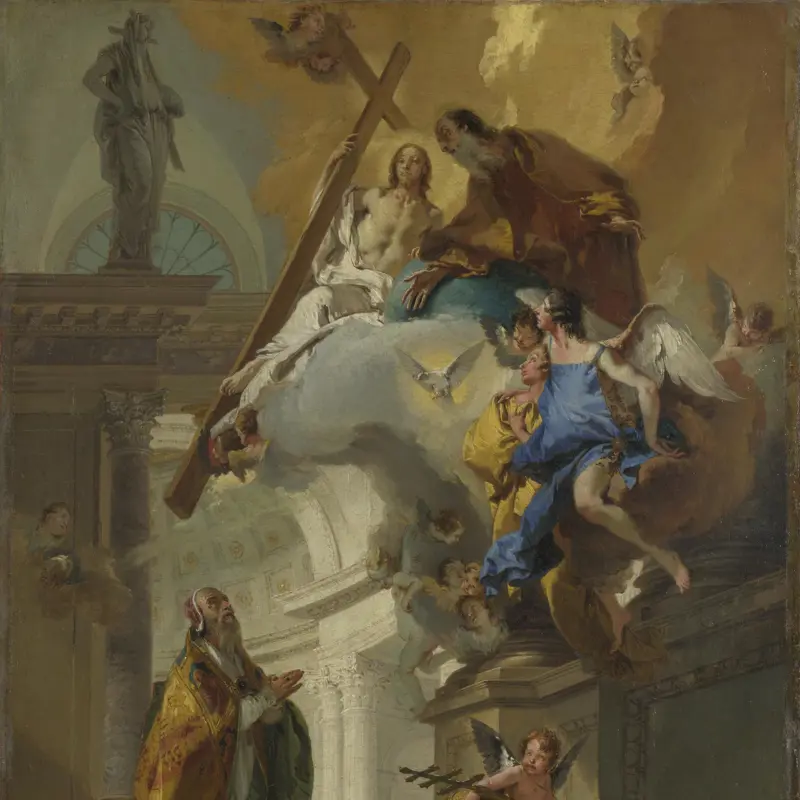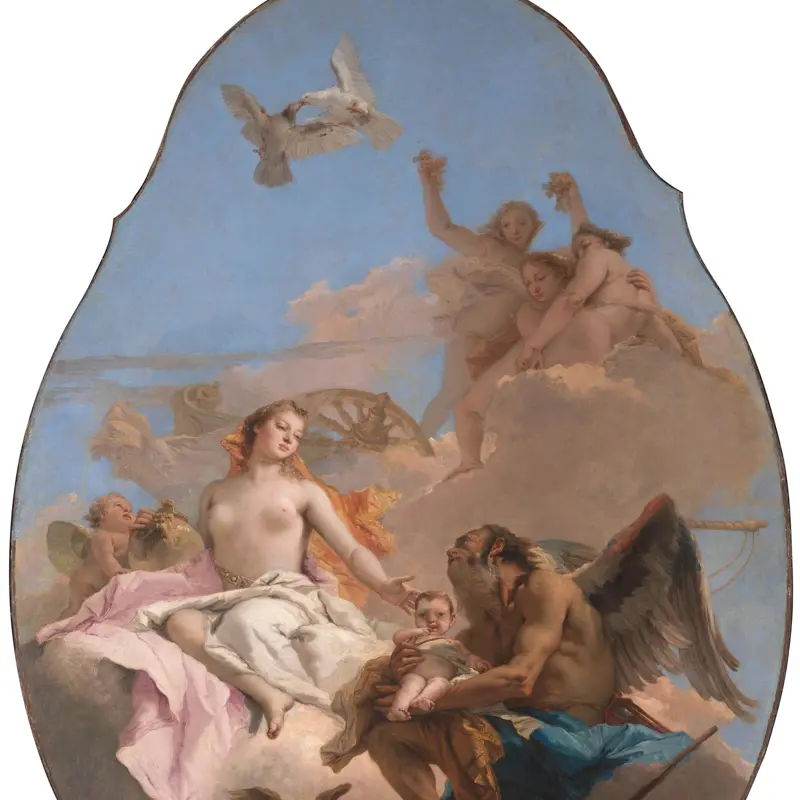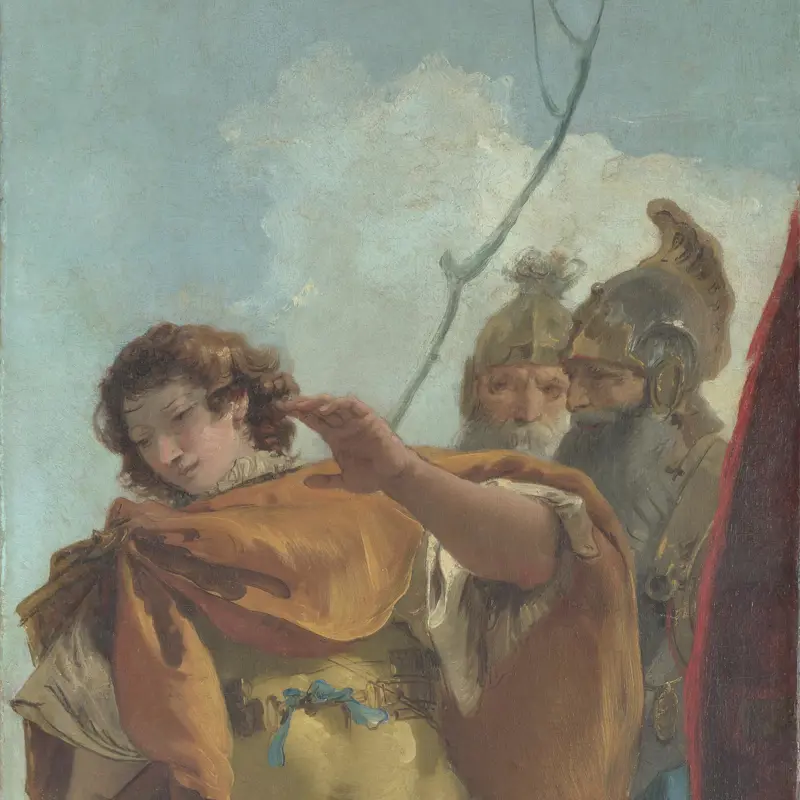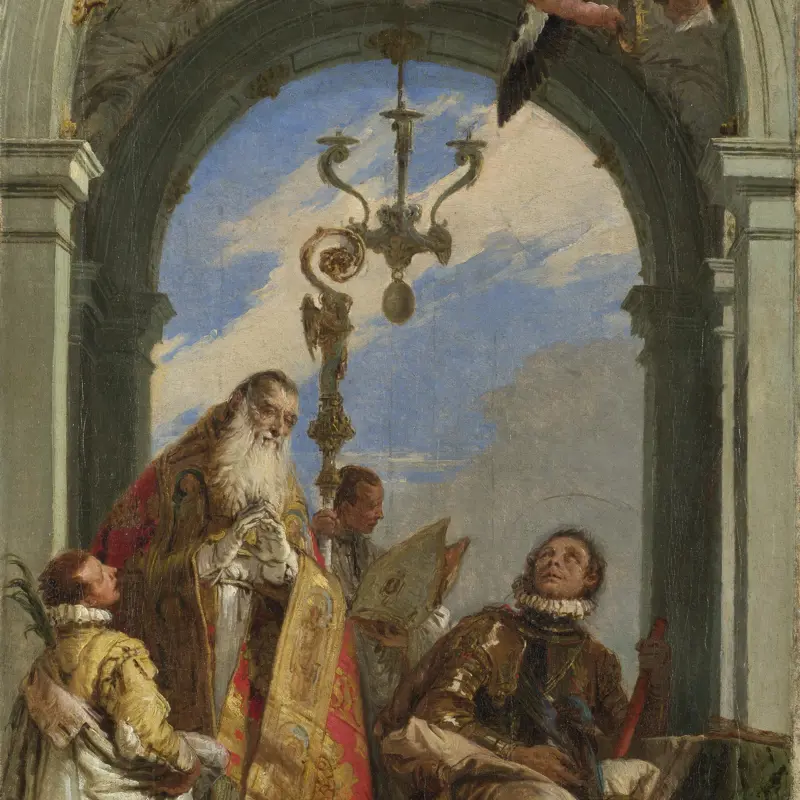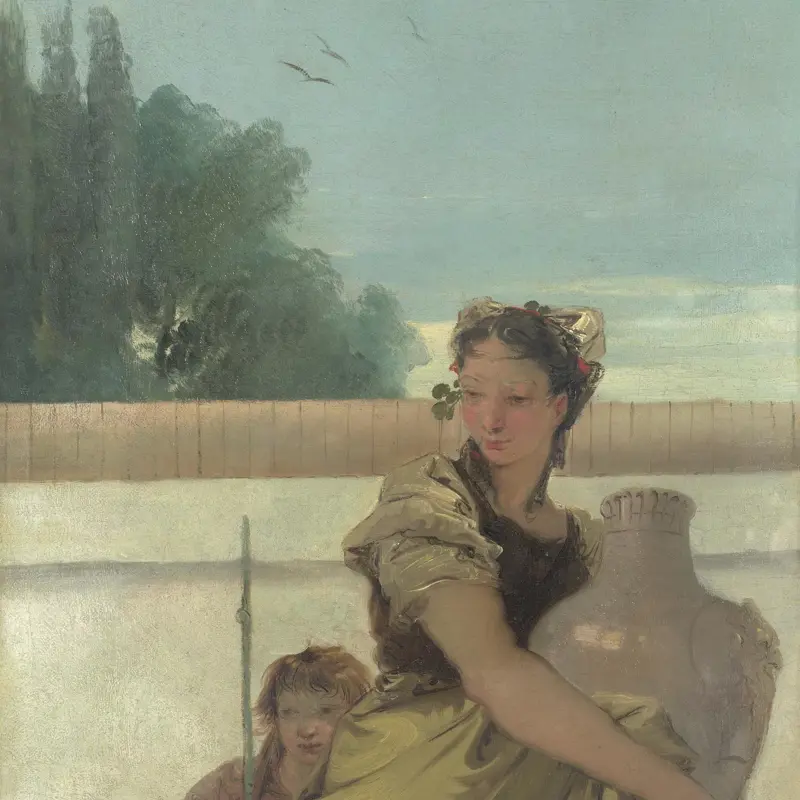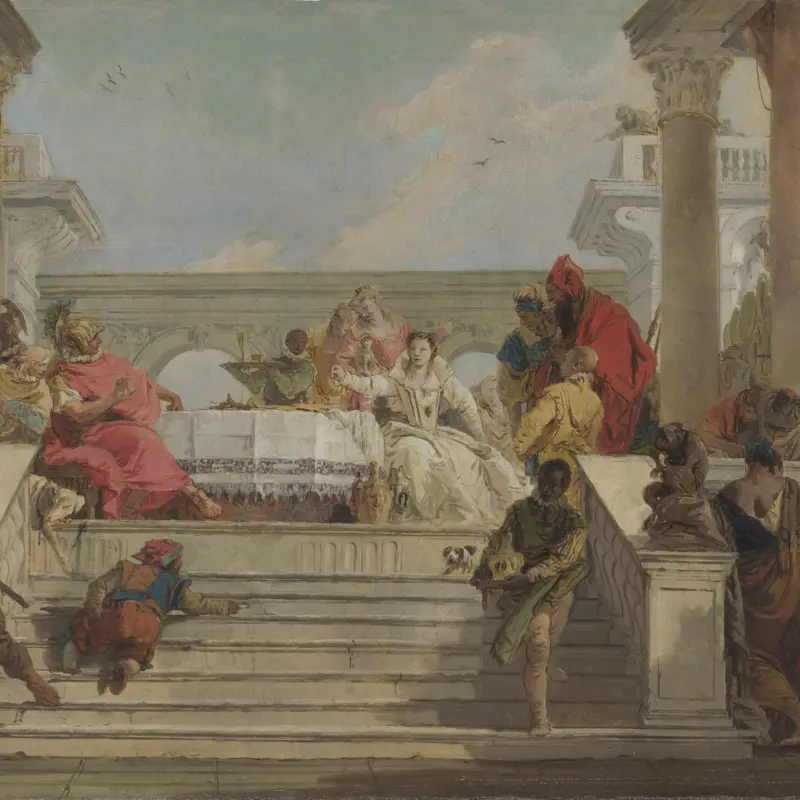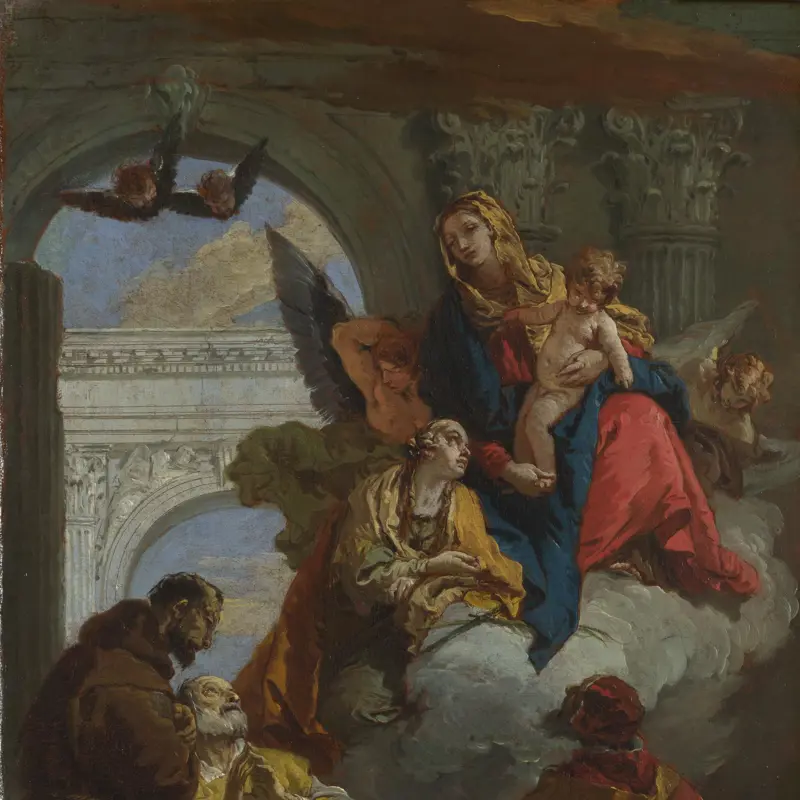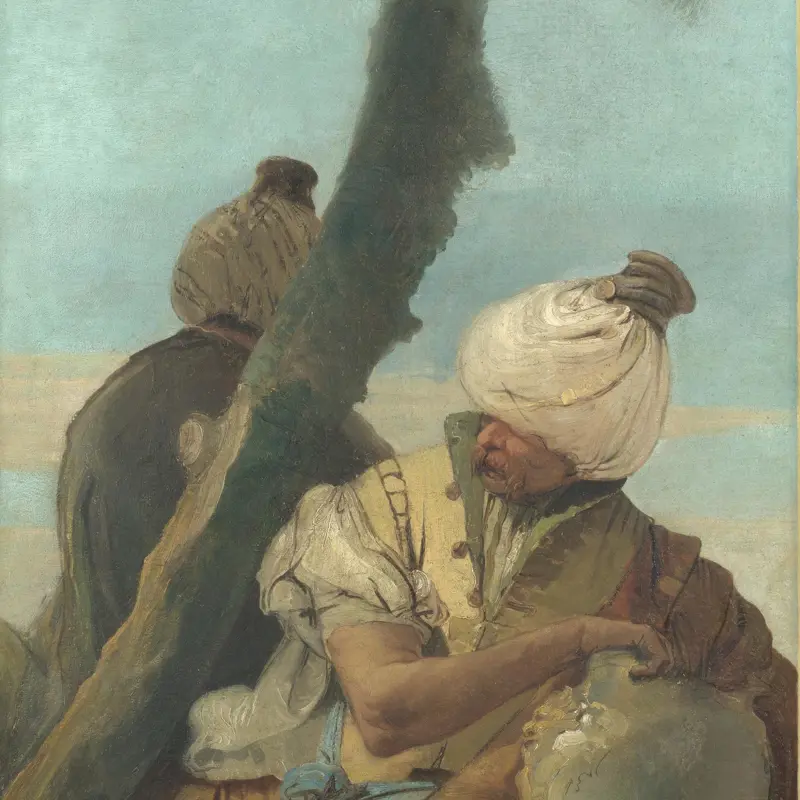Giovanni Battista Tiepolo, 'Four Saints', before 1737
About the work
Overview
This oil sketch shows the design for an altarpiece that Giovanni Battista Tiepolo made for the church of San Salvatore in Venice in 1737. The scene unites saints from different periods and places. Seated on the throne and holding a flaming heart to symbolise his love for God is Saint Augustine (354–430), Bishop of Hippo and an influential theologian. Saint John the Evangelist, who authored one of the Gospels, sits on the right with an eagle, his symbol. Saint Louis – Louis IX, King of France, who died in 1270 – appears on the left. We don't know who the bishop in a golden robe is, but all of these saints would have been important to the Cornaro family, who commissioned the altarpiece.
Loose, energetic brushstrokes give the scene a rich, decorative texture, as do the touches of bold colour used to evoke sumptuous fabrics and delicate details, such as in Saint Augustine’s embroidered robe and Saint John’s rich red drapery.
Key facts
Details
- Full title
- Saints Augustine, Louis of France, John the Evangelist and a Bishop Saint
- Artist
- Giovanni Battista Tiepolo
- Artist dates
- 1696 - 1770
- Date made
- before 1737
- Medium and support
- oil on canvas
- Dimensions
- 58.1 × 33.3 cm
- Acquisition credit
- Bought, 1885
- Inventory number
- NG1193
- Location
- Not on display
- Collection
- Main Collection
- Previous owners
Provenance
Additional information
Text extracted from the ‘Provenance’ section of the catalogue entry in Michael Levey, ‘National Gallery Catalogues: The Seventeenth and Eighteenth Century Italian Schools’, London 1986; for further information, see the full catalogue entry.
Exhibition history
-
2015Sacred Spaces: The Lycett Green CollectionYork Art Gallery1 August 2015 - 6 March 2016
Bibliography
-
1956Levey, Michael, National Gallery Catalogues: The Eighteenth Century Italian Schools, London 1956
-
1986Levey, Michael, National Gallery Catalogues: The Seventeenth and Eighteenth Century Italian Schools, London 1986
-
2001
C. Baker and T. Henry, The National Gallery: Complete Illustrated Catalogue, London 2001
About this record
If you know more about this work or have spotted an error, please contact us. Please note that exhibition histories are listed from 2009 onwards. Bibliographies may not be complete; more comprehensive information is available in the National Gallery Library.

